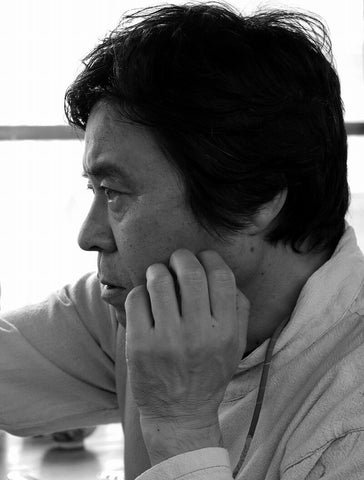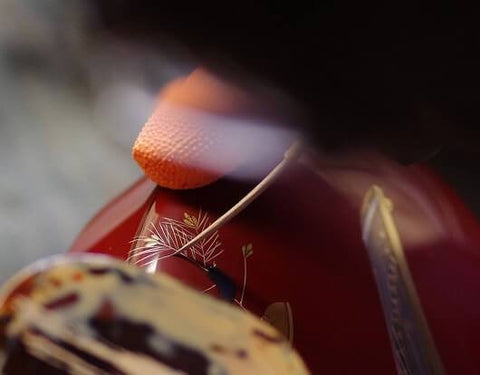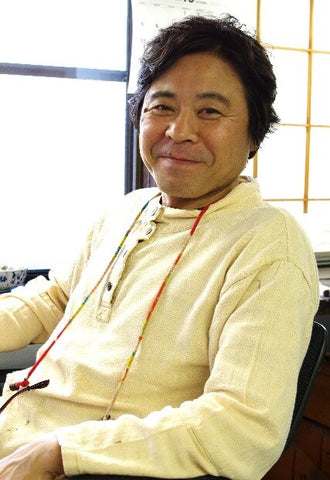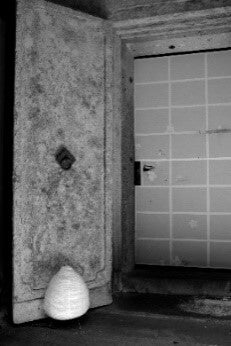About Junichi Hakose 箱瀬淳一

Born in 1955 in Wajima-city Ishikawa Japan, he is a native to the home of traditional Wajima lacquerware.
From the mid-'60s to the mid-'70s, the Wajima lacquerware industry was at the height of its growth (doubling every five years).
Then, Junichi Hakose graduating from school, the easiest path for him to get a job was to be in the lacquerware manufacturing industry. So he just went in with little passion. Starting from an apprentice (lasts for four years), which he recalls as "extremely tough and hard with no time to sleep" and his motives to be in the industry being very vague, “I just worked and worked, wanted to get what I can get, and get out.” The lacquerwares he was producing at a very high pace then were all made to be used as everyday-ware with Wajima quality, which is robust, having ease of use, and elegant.
As he was a fast learner with his character of persistence, he learned all the processes of Wajima lacquerware manufacturing (excluding the woodwork) by himself, which is not the normal case. The rationale for him was that at least he could claim that "he learned something". After finishing his apprenticeship, he became an independent maki-e craftsman: “only from inertia” is how he recalls. Therefore, it took him another several year until when he could feel from his heart that he will live in the industry.
However, these rough foundations had given him the real depth to his work of art, that his lacquerware possesses ultimate comfort as an everyday-ware with artistic beauty.

To this day, even after he became one of the most internationally acclaimed Japanese lacquer artists, his single desire is to have his works be used every day by everyone who has them in his hands. Master Junichi Hakose now takes several apprentices and runs his workshop "Hakose Koubou" in the house he was born.
With his success after receiving many awards from his early career and also with his down-to-earth personality, he has many fans all over Japan that the relationships have been lasting easily for more than 20 years. He flies from Wajima every month or even every week to all over Japan and meets those fans to show his new creations. He is extremely active and persistent.

Hakose Koubou
Where the Art is Born

Koubou utilizes his Japanese traditional house with the storage house, Kura. Kura is made with plaster for fireproof, thereby being a perfect place for urushi lacquer coatings.
Inside is good against dust and has better control over humidity and temperature.
Surroundings areas are full of nature and sun with good wind from the Sea of Japan. Pure creations come from this environment and his down to earth personality as well.





The Wood Work - The Collaboration -
Master Hakose values the relationships with the master woodworkers, continuing more than 25 years. Therefore, when he orders new woodwork, amazingly he gives directions only with a simple freehand sketch. It is a very rare practice in the world of woodwork in Japan. The intention is not to solidify and push his idea on a paper, but to evoke master woodworker's view and ideas in three dimensions with real bulk wood in front. With a few conversations, a new form is created just right to his image, where the difference comes in less than 0.1mm order, amazing collaboration!



The Work of Art
The master lacquer artist Junichi Hakose has a huge passion for creations that are rooted in one's everyday lives. He takes extra care that his creations will resonate with your soul.
He gets inspirations often from the nature in Wajima; they are such as the Sea of Japan, hills and rivers of Noto Peninsula, beautiful natural local flowers and fruits, birds, insects, fishes or local amphibia, trees, plants and not to mention, the sun, winds, clouds, snow, rain, the moon and stars, where they are near and direct. He loves to take time just to watch or feel them go by, those that one might overlook in a busy everyday life, thus very important elements that constitute one's real lives.
He believes that his creations should be connected to people's everyday lives and to one's souls.

The Fugeshi River in front of Hakose Koubou and the surrounding nature of Wajima.
